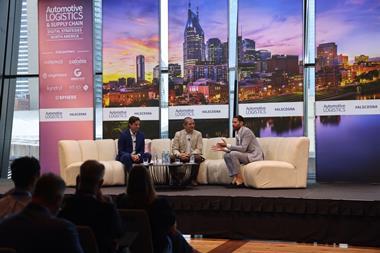 A new, dedicated ro-ro terminal at Pipavev could become a major west coast export hub for India - but it depends on a number of factors, not least what will happen at the port of Mumbai
A new, dedicated ro-ro terminal at Pipavev could become a major west coast export hub for India - but it depends on a number of factors, not least what will happen at the port of Mumbai
While not without its hiccups, India’s vehicle exports have been on the rise, with some predicting volume could reach 1m passenger and commercial vehicles per year by 2018, up from around 700,000 units today. Among the stumbling blocks to this growth, however, has been a lack of specialised terminals for ro-ro handling at the country’s ports. To boot, one of the country’s largest ports for vehicle exports may eventually close its docks to vehicles: a committee set up under ex-chairman of the Bombay Port Trust, Rani Jadhav, has recommended that export activities at the crowded port, with the exception of the oil business, should find options beyond India’s financial capital.
Against this background, NYK Auto Logistics India set out to find a new hub that not only had space, but where it could also carry out value-add activities such as pre-delivery inspections. Back in 2010, executive director captain Sandeep Chawla started studying options in Gujarat and Maharashtra, including Dighi, Dahej, Jaigarh, Mundra, Adani Hazira and Pipavav.
The port needed to meet Chawla’s crisp checklist: environmentally friendly; a short distance to an automotive hub; good road links; and, critically, leaders with a vision for serving the car sector. “Globally, in lot of places, the container business has pushed the automobile business out,” he says.
Gujarat’s port of Pipavav met the physical criterion. Ford, Tata, General Motors and Maruti have either built or planned plants in Sanand, 300km away, to which the port has good road access, including stretches of highway earmarked for further investment. Pipavav also has rail access, including 12 scheduled departures from the port. Furthermore, it has been used already by the likes of Ford and Suzuki for imports.
What ultimately convinced NYK was the management at APM Terminals, the wholly owned subsidiary of AP Moller-Maersk that controls the port. APM Terminals runs 71 facilities worldwide, but it has no experience with ro-ro; its Indian executives saw opportunity. Prakash Tulsiani, managing director at Pipavav, says that with 1,600 acres (650 hectares), the port can expand its container business up to 4.5m TEUs per year and 20m in bulk cargo, and still have room to grow.
“We noticed there were automotive plants in the north hinterland and also GM nearby. We approached NYK India. Initially, they were sceptical because of coal handling at the port and the consequent dust issue,” says Tulsiani. “During discussions, we offered them the extreme corner area behind the oil tanks, which act as a shield against coal dust. NYK did a thorough study and found the site suitable for a ro-ro terminal.”
APM will handle waterfront activities, while NYK controls vehicle processing. Following years of consultation, India’s first port-based vehicle processing yard will be commissioned by the middle of this year.
The 21-acre yard, expected to cost 50 crore rupees ($8m) and have capacity for 250,000 vehicles per year, will have a PDI centre and customs bonded area. A 1.3km road will connect the yard with the berth, entirely within the port. This infrastructure is a leg-up on Mundra port, 450km away on the same coast, which has handled Maruti Suzuki exports for decades, but for which NYK does PDI outside the port.
Initially, at least, Chawla sees Pipavav serving exports out of Sanand, as well as production from northern India. But should Mumbai close or reduce vehicle exports – where NYK already exports around 12,000 vehicles per month – some of that volume would be prime for Pipavav. However, Chawla is cautious, considering that many exports through Mumbai come from Pune, nearly 1,000km from Pipavav. Furthermore, carriers moving from Pune to Pipavav would likely return empty.
Chawla believes that growth in Sanand will eventually relieve the backhaul issue. However, NYK is looking to partner with Canada-based Convertible Trailer Manufacturing Worldwide (CTM) to use car carriers that can haul both vehicles and general cargo, allowing trucking companies to return from the port carrying containers. Bill Pawluk, CTM’s chief executive, says he has been exploring the potential of such routes India.
While it is early days for Pipavav, both APM and NYK have expectations of attracting Ford to try the port for vehicle, component and engine exports from Sanand. Ford has yet to comment, but NYK already works closely with the carmaker in Chennai, managing its plant vehicle yard, and will do the same in Sanand. Pipavav was also among the ports Ford used to import machinery for the plant.
APM and NYK still have to prove the facility will live up to expectations, but Chawla is expecting it to be a win-win.





































